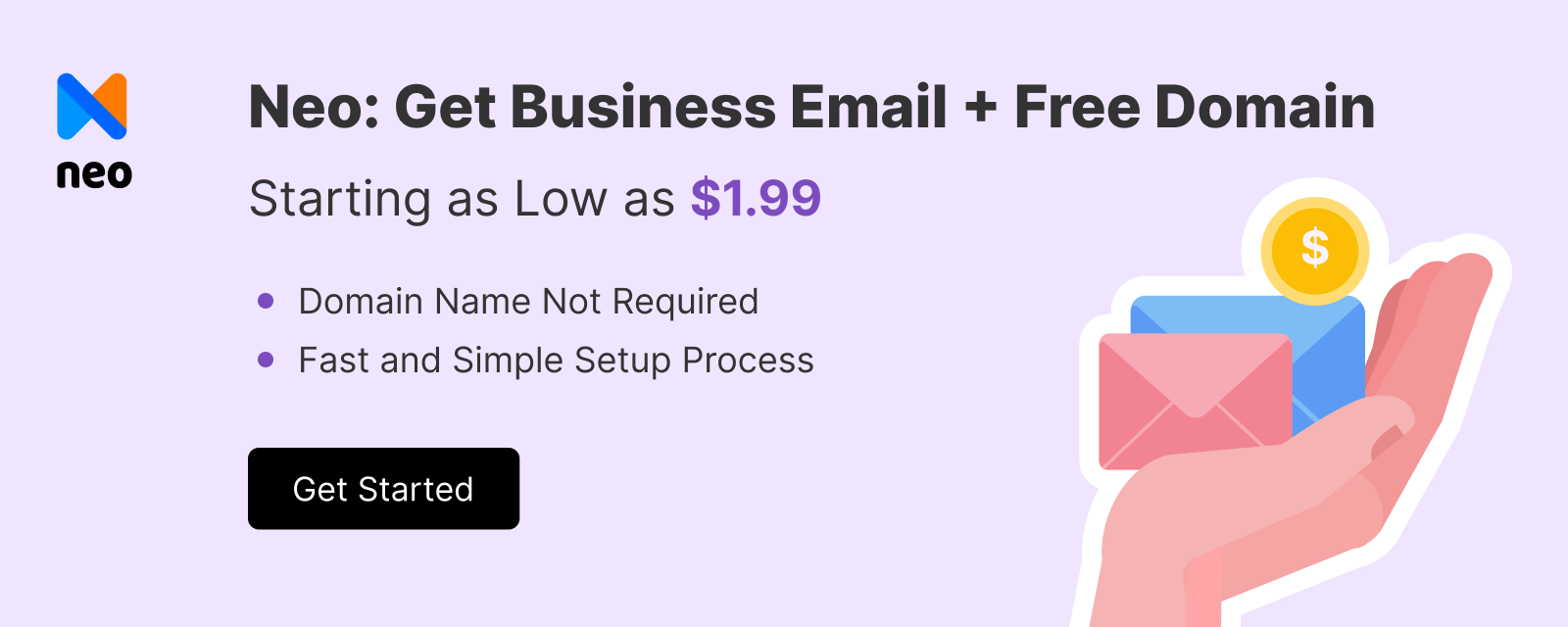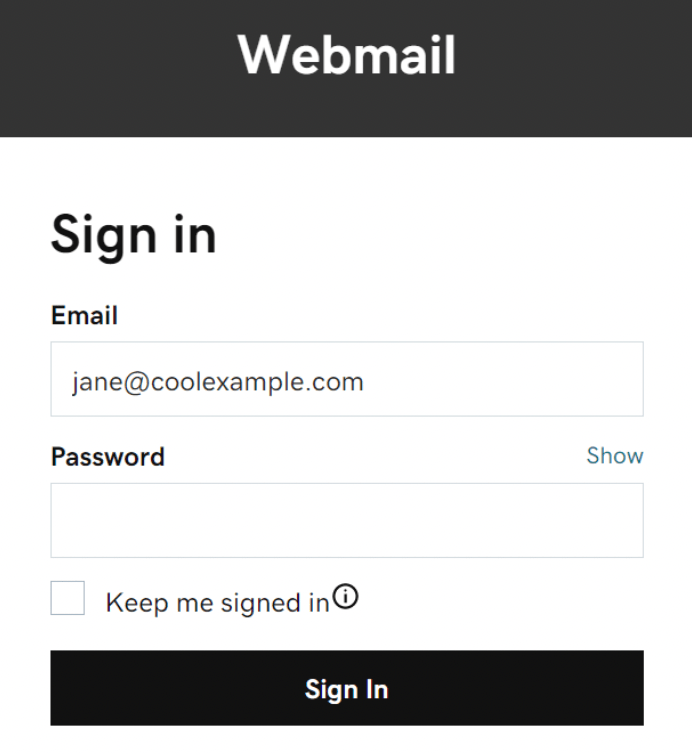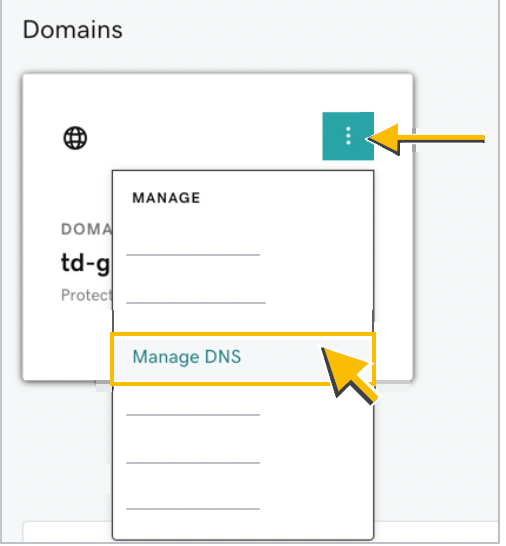
Get Business Email
No domain name required
Get Professional Email
With a Free Domain
Introduction to Godaddy Professional Email
GoDaddy, a name many recognize as a heavyweight in the domain registration world, also offers robust email solutions tailored for professionals. Beyond merely being a domain registrar, GoDaddy has honed its services to cater to individuals and businesses seeking reliable email communication under their personal domain. Imagine having a business email like 'contact@yourbrand.com' instead of a generic '@gmail.com' or '@yahoo.com.' It looks professional and establishes brand credibility.
GoDaddy's professional email offerings range from basic mailbox functionalities to more integrated solutions that sync seamlessly with other tools, making collaboration and communication a breeze. Many users appreciate the user-friendly interface and its security and backup features. Whether you are an entrepreneur eager to stamp your brand's presence or a growing company looking to streamline communication, GoDaddy's email services present an elegant solution. It is a blend of formality with the warmth of human touch, all packaged under the trusted banner of GoDaddy.

How to Setup Professional Email with Godaddy - 5 Steps
Setting up GoDaddy's in-house professional email id, commonly referred to as Workspace Email or cPanel Email (depending on your hosting type), requires following a series of steps. Below is a general guide to setting up GoDaddy's email.
Step 1. Log in to Your GoDaddy Account
Go to the GoDaddy website and sign in to your account.
Access the Email Management Section
From your GoDaddy dashboard, navigate to 'My Products.'
Scroll down to the 'Workspace Email' or 'cPanel Email' section, depending on your hosting type.
Create a New Email Account

Click 'Set Up' next to the domain you wish to use.
Enter the email address you wish to create (e.g., contact@yourdomain.com).
Create and confirm a password for the email account.
Allocate the desired mailbox storage size.
Click 'Create'.

Step 2. Configure Email Settings
Once the email is created, you might need to configure some settings:
SMTP (Outgoing Server): Typically, it's something like smtp.secureserver.net.
POP3 (Incoming Server for traditional email): Often pop.secureserver.net.
IMAP (Incoming Server for synchronized email): Generally imap.secureserver.net.
Use these settings when configuring your email client or third-party app to access your GoDaddy email.
Step 3. Accessing Your Email
GoDaddy provides a web-based interface to check your email. From the 'Workspace Email' or 'cPanel Email' section, click on 'Manage' next to the email account you have set up.
This will redirect you to the webmail interface, where you can log in using the email address and password you have set.

Step 4. Additional Settings and Security
It is recommended to change your email password for security periodically.
Ensure to set up security questions or two-factor authentication if GoDaddy provides these options for added security.
Mobile or Third-party Client Setup
If you're looking to set up your GoDaddy email on a mobile device or third-party email client (like Outlook or Thunderbird):
Use the SMTP, POP3, or IMAP settings provided earlier.
Follow the specific instructions for your email client or device to add a new account.
Step 5. Test Your Email and Done
Always send a test email to ensure that everything is working correctly.
Send an email to your new address and ensure you can receive it. Reply to that email to confirm sending works as well.
Learn how to send emails professionally. Read our blogs on:
- How to write a professional email
- Professional email format that everyone must follow
- Email etiquettes to remember
- How to start an email message professionally
- How to write a reply email
- How to draft a resignation email
Bonus: How to set up Godaddy Professional Email with Google Workspace
If you want to connect your professional Gmail (from Google Workspace, formerly G Suite) to a domain you've purchased through GoDaddy, you must set up the MX records on GoDaddy to point to Google's servers. Here's a step-by-step guide:
Step 1. Purchase & Setup Google Workspace
Before you can set up Gmail with your GoDaddy domain, ensure you have purchased a Google Workspace plan.
During setup, Google will ask for your email domain name. Enter your GoDaddy domain.

Step 2. Sign in to GoDaddy
Go to GoDaddy's official website.
Click 'Sign In' in the top right corner and log into your account.
Step 3. Access the Domain Management Page
After logging in, hover over your name or username in the top right corner.
From the dropdown, click on "My Products."
Here, you will see a list of all your domains. Click on the domain you want to set up with Google Workspace.
Step 4. Manage DNS Records
Once inside your domain details page, look for a section titled "DNS" or "Manage DNS" and click on it.

This will lead you to the DNS Management page for that domain.
Step 5. Edit/Add MX Records
Scroll down to the section labeled "Records."
If there are any existing MX records, delete them.
Add the new Google Workspace MX records. Google generally requires these 5 MX records:

Step 6. (Optional) Set up SPF and DKIM
To prevent email spoofing and for better deliverability, setting up SPF and DKIM records for your Google Workspace email is advisable.
SPF: Add a TXT record with the value v=spf1 include:_spf.google.com ~all
DKIM: You need to generate a DKIM key in your Google Workspace admin console, then add it as a TXT record in GoDaddy. Follow Google's instructions for this step.
Step 7. Verify the Setup with Google
Return to your Google Workspace setup wizard.
Click "Verify" to let Google check if the MX records have been set up correctly. DNS changes may take some time to propagate, but changes made on GoDaddy are typically reflected within an hour.
Step 8. Finalize the Setup
Once verified, complete the remaining steps in the Google Workspace setup.
Remember, MX records are responsible for mail delivery, so ensure they are set up correctly. Mistakes could lead to not receiving emails. Always double-check your entries, and consider keeping the previous settings noted down somewhere in case you need to revert.
We recommend reading this article for a detailed understanding of Godaddy & Gmail.

Bonus: How to Set-up Godaddy Professional Email with Outlook
Whether you are launching a new business, starting a blog, or simply wish to have a more professional email address associated with your domain, the synergy between GoDaddy and Outlook ensures a streamlined experience. The process involves acquiring a domain, setting up GoDaddy's email service, and integrating it with Outlook. Let us walk you through these steps to help you get started.

Step 1. Go to GoDaddy's official website.
Search for your desired domain name.
Add the chosen domain to your cart and proceed to checkout.
Follow the on-screen instructions to create an account (if you don’t have one) and complete your purchase.
Step 2. Purchase & Setup GoDaddy's Email Service
After purchasing a domain, navigate to GoDaddy's Email & Office services.
Choose an email package (like Professional Email or Workspace Email).
Add the service to your cart and complete the purchase.
After purchasing, you will be prompted to set up your email. Follow the prompts, including choosing your email address (like contact@yourdomain.com) and setting a password.
Step 3. Configure Your Email Account in Outlook

For Office 365 users (which is integrated into GoDaddy’s Professional Email)
Step 4 : Done - Open Outlook.
Go to 'File' > 'Add Account'.
Enter your full email address (e.g., contact@yourdomain.com).
Click 'Connect'. Outlook will auto-discover your settings and set up your account for you.
Enter the password you set for your email account when prompted.

Frequently Asked Questions
1. Can I integrate my GoDaddy professional email with Gmail?
Answer: Yes, you can integrate your GoDaddy email with Gmail. Adding your GoDaddy email account to Gmail lets you send and receive emails from your GoDaddy domain directly within the Gmail interface.
2. How do I connect my GoDaddy professional email to Outlook?
Answer: To connect the GoDaddy email to Outlook, you need to set up the account using IMAP or POP3 protocols in Outlook's 'Add Account' settings, entering the server details provided by GoDaddy. The exact steps may vary depending on the version of Outlook you're using.
3. Are my emails secure when integrating GoDaddy with Gmail or Outlook?
Answer: Yes, emails remain secure. Both Gmail and Outlook use encrypted connections when fetching and sending emails. However, always ensure you're using the correct server settings, including SSL/TLS protocols, as provided by GoDaddy.
4. Why am I not receiving emails from my GoDaddy account in Gmail after integration?
Answer: Check your server settings in Gmail to ensure they match GoDaddy's recommended settings. Additionally, verify that there are no filters or forwarding rules causing emails to be moved or deleted. If issues persist, it's a good idea to consult GoDaddy's support.
5. Will my sent emails display my GoDaddy domain even if sent from Gmail?
Answer: Yes, after integrating your GoDaddy email with Gmail, any emails you send through that account in Gmail will show as being sent from your GoDaddy domain email address.
6. Can I use GoDaddy's professional email service if I bought my domain elsewhere?
Answer: Absolutely! While GoDaddy offers domain registration, their email service can be used with domains registered elsewhere if you modify the domain's MX records.
7. How many GoDaddy email accounts can I add to my Outlook client?
Answer: Outlook allows users to add multiple email accounts. There isn't a set limit on the number of GoDaddy email accounts you can add, but performance might be affected if you have a considerable number of accounts or a large volume of emails.
8. Can I sync my GoDaddy calendar and contacts with Gmail or Outlook?
Answer: Yes, GoDaddy's Workspace Email and certain other services can sync calendars and contacts with both Gmail and Outlook. You need to set this up using specific server settings provided by GoDaddy.
9. What should I do if emails sent from Outlook using my GoDaddy account end up in recipients' spam folders?
Answer: Ensure you have set up SPF and DKIM records for your domain in GoDaddy's DNS settings. These records help in email authentication and can improve deliverability. If issues persist, consult GoDaddy's support.
10. Are there storage limits when I connect GoDaddy email with Gmail or Outlook?
Answer: Storage limits depend on the email package you've purchased from GoDaddy. Integrating with Gmail or Outlook will keep this limit the same. However, emails fetched by Gmail will count towards Gmail's storage quota, and emails stored in Outlook will use up local or Exchange server storage, depending on your setup.
11. Is the GoDaddy email setup complicated?
Yes, Setting up GoDaddy email, like many online services, can feel intricate for those unfamiliar with the process. While GoDaddy provides step-by-step guides and customer support to assist users, integrating with other platforms like Outlook or Gmail might require careful attention to settings and configurations. It might be straightforward for individuals who are used to setting up online services. However, for those new to the process, it may be beneficial to seek guidance from GoDaddy's support resources or knowledgeable colleagues or friends.
Conclusion
GoDaddy stands out as a prominent platform catering to various online needs. They offer a broad spectrum of services, from domain registration to website hosting. However, the multitude of options can seem daunting for those stepping into the digital realm. It is like being handed a comprehensive toolkit for the first time. Each tool has its purpose, and while each is designed with the user in mind, understanding how and when to use each tool effectively can be a learning curve. This isn't to say that GoDaddy's services are overly complex, but rather that, like assembling a detailed puzzle or crafting a piece of intricate artwork, there's a need for attention to detail, comprehension, and, occasionally, a bit of guidance.
Disclaimer
The digital world is in a constant state of flux, with platforms like GoDaddy regularly refining and updating their offerings to meet the evolving needs of their user base. Consequently, the details provided here capture the state of affairs within a specific time frame. Turning directly to GoDaddy's official website is recommended for anyone wanting to ensure they have the freshest insights and most up-to-date guidance. There, one can find the latest procedures, features, and updates straight from the source.

Get Business Email
No domain name required
Get Professional Email
With a Free Domain





.svg%201.svg)
.svg)
.svg)
.svg%201.svg)



